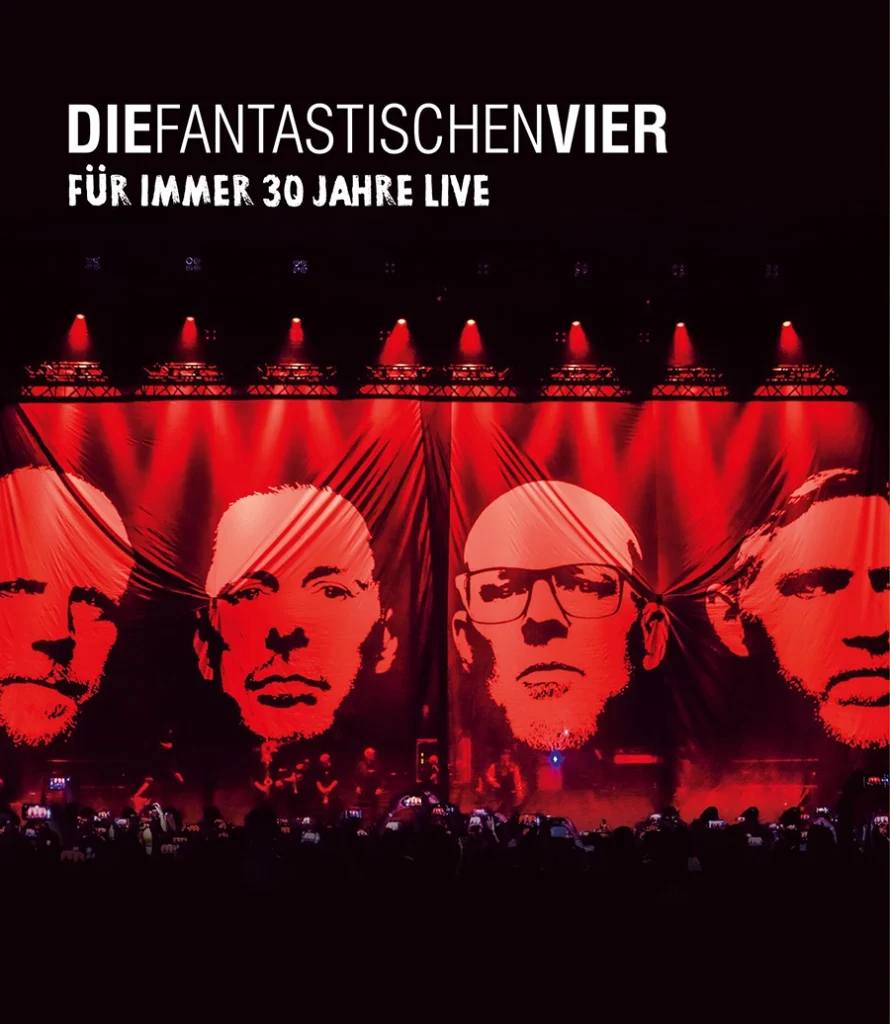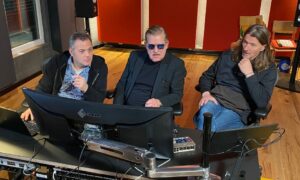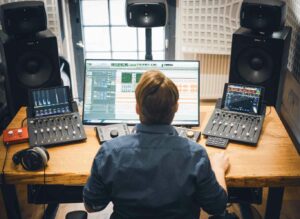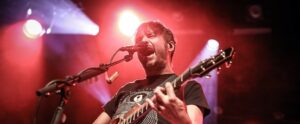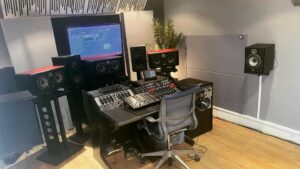
We had the pleasure of speaking to renowned sound engineer Hans-Martin Buff, who has been working in the music industry for over 30 years. Our interviewer Christoph Diekmann spoke to him about his fascinating career, his experiences with immersive audio and his work on projects such as the Fantastischen Vier album “Für immer 30 Jahre Live”.
Thank you for taking the time to contribute to our blog on Pure Audio Recordings. Would you like to tell us a bit about your career in the music industry?
Of course. I’ve been in the sound business for 30 years, which was quite a surprise for me at the time. I was always in music and in bands, but had nothing to do with mixing and sound engineering. I got into sound engineering through a friend when I was living in Minnesota in the 90s. I quickly took a liking to it. At first I worked as an assistant in a studio and then freelanced for bands. My first big leap came when I landed a gig with Prince in the studio at the end of the 90s.
After this phase, I made a brief foray into post-production for television, but it wasn’t for me. I then moved to Germany with my family, and got the opportunity to work with amazing people, especially in the 2000s, with Peppermint Jam and Peppermint Park. I’ve always been technically involved and have even co-produced some current projects such as Scorpions. So my journey in the music industry has been quite diverse.
Did you come to 3D audio via 5.1 or did you actively mix 5.1 at all?
I mixed it when it was part of something. So only in the 00s and on live DVDs. My experiences with 5.1 audio were not very positive at first and I was initially sceptical about anything that went beyond stereo. I was more interested in making music that everyone could enjoy without the need for complicated setups. I have not had good experiences with multi-channel loudspeaker systems in the past.
The transition to 3D audio took place about five years ago when I realised the potential. The key for me was that it could work with the equipment people already had, such as headphones. This approach gave the audience the freedom to experience the music the way they wanted to. For me, producing 3D audio was a natural progression that I see as an artistic endeavour rather than a technical one. You have to get away from the idea that 3D audio is just “differently mixed stereo”. You have to approach it the way you approach a good stereo mix – in the production and in the creative steps.
What is your relationship to the speaker mix compared to the headphone mix?
I always ask myself: if I do something binaural, why should I mix it through loudspeakers? I have to hear it the way people hear it. But when I mix Dolby Atmos, I don’t know how people will hear it in the end. Here I start with headphones to make a preliminary mix. I need to hear how the audience will experience the music through headphones, because that’s the primary way of listening to music these days. Then I check the mix on the speakers to make sure it’s coming across well. Then I go back to the headphones to make any necessary adjustments.
My approach is that the music has to sound good through both headphones and speakers. It’s about finding a balance between these two listening experiences.
Are there genre restrictions where 3D mixing with headphones doesn’t work well, or does it work with any style of music, e.g. classical or jazz?
I don’t think there are strict genre restrictions, but I can imagine that with classical music. Pop, for example, can be used in different versions, which offers more opportunities for experimentation. Jazz can work wonderfully because it has the same freedom as rock or pop. But above all it’s about how you approach the recording and production process in order to work out the spatial dimensions in the music.
Let’s move on to the Fantastic Four. How did the Fanta4 project come about?
I had a business relationship with a company called 3D-Pro and we worked together at the Fanta concert. They were responsible for the stereo mix, while I concentrated on the Dolby Atmos mix. For me, it is important not to create anything artificial when mixing, but to add something to what is already there. My goal was to create a scenario in which the artists could go to their own concert. In other words, to create an immersive experience for them so that they can experience their own concert as if they were in the audience. I wanted to make sure it sounded better than what they were hearing anyway. And I succeeded.
Can you explain your approach to the video mix?
I’m trying to do the video mix a little differently. Mixing for visual content is different from mixing audio alone because our perception changes when we see something. The eyes have a big influence on the brain, so I adapt the sound to the visual presentation. This may require some fine-tuning to ensure that the sound harmonises with what is happening on the screen.
Your mix concentrates on capturing the live atmosphere. Did you add additional tracks that weren’t in the room?
Yes, indeed. For this mix, I focussed on capturing the authentic live atmosphere you just mentioned. This meant designing the sounds in such a way as to create the impression that the audience was actually there. I achieved this by placing additional tracks in the room where normally only the audience would have been heard. I wanted to make sure that the audience had an intense and immersive sound experience that was as close to the real concert atmosphere as possible.
Were there any particular challenges when recording the album “Für immer 30 Jahre Live”?
I had to change a few things to make the enthusiasm more audible. This was mainly due to the fact that we recorded in a stadium and not in a hall. Stadiums are acoustically difficult because the sound can escape upwards. With two different arrays and a few microphones, we still managed to capture a good atmosphere.
How did the artists react to the 3D production?
I have exchanged ideas with And.Y. I played him a few things to give him an impression. Not only the Fanta4 stuff, but also other things of mine. He thought it was great.
Finally, what are your next projects? Can we expect Blu-ray, streaming or something similar?
My next projects are very diverse. I’m working on new 3D audio productions and I’m working closely with various artists to present their music in 3D audio. I am also currently writing a book in which I will share my experiences and knowledge in the field of music production and 3D audio. My goal is to continue to pursue innovative approaches in the audio world and to inspire listeners with high-quality 3D sound experiences.
The record companies inevitably have to deal with 3D audio. As a result, a large number of orders are placed with little effort. They see it more as a gimmick. But my goal is to do great projects with great people. Projects in which a creative decision-making process is possible.
That sounds very promising. Hans-Martin, thank you very much for your time, take care!
You’re welcome Christoph, see you then!
For your information: The In-Side mix in Dolby Atmos of the new Peter Gabriel album “I/O” was also mixed by Hans-Martin Buff.



